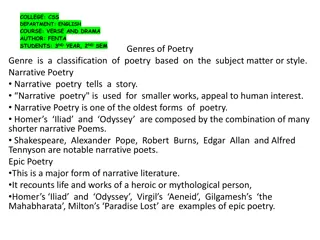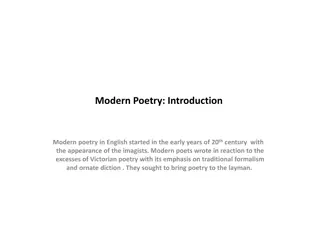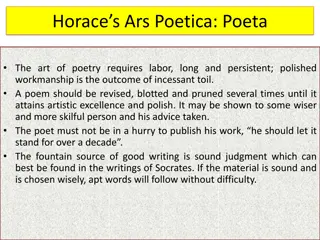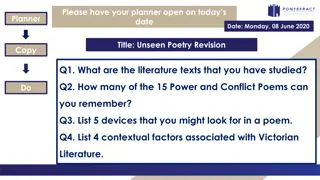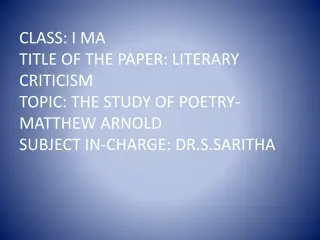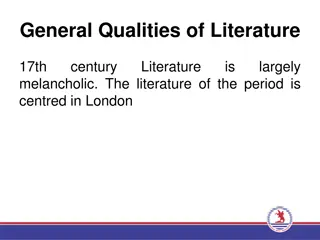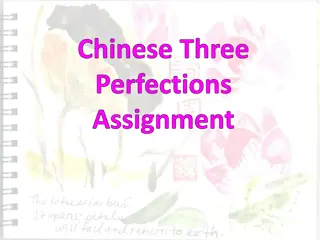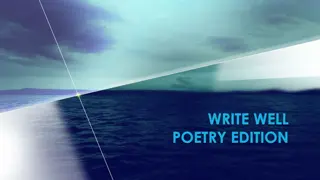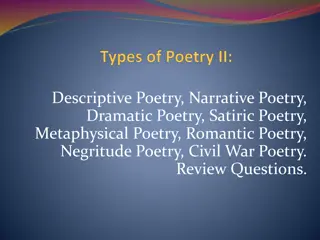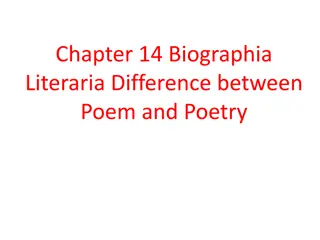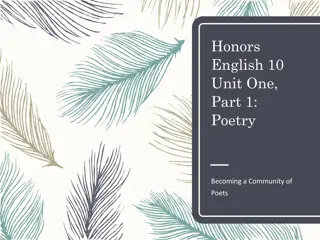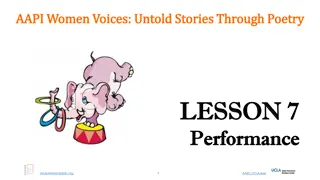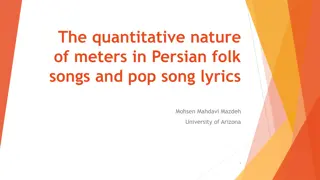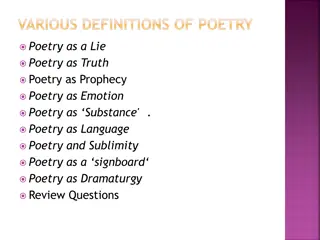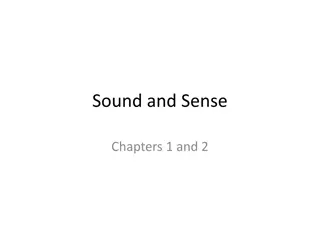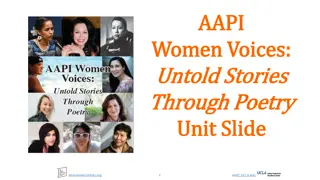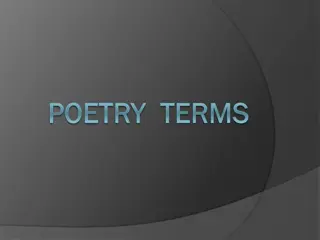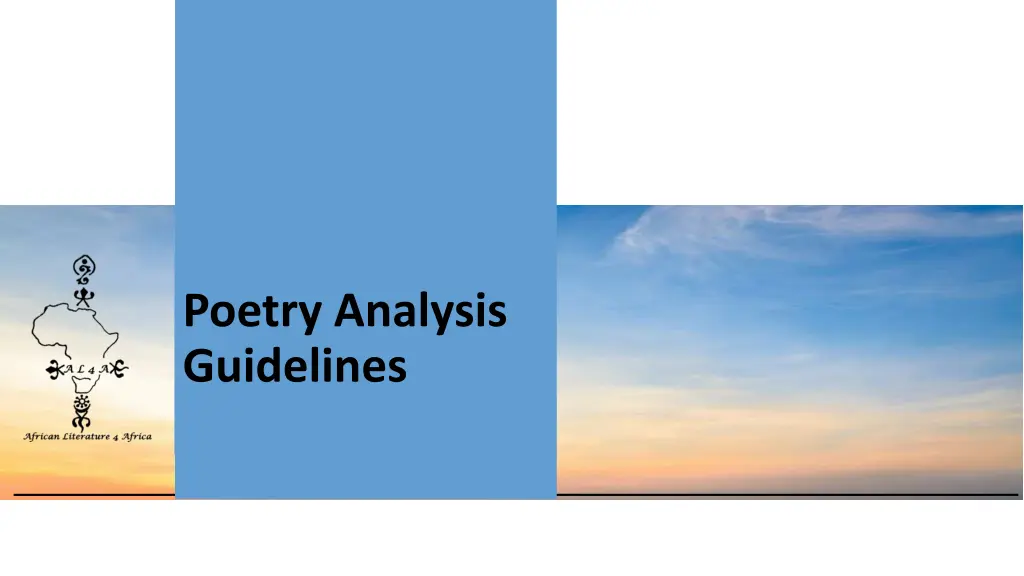
Effective Poetry Analysis Guidelines for Learners
Explore the intricate world of poetry with these comprehensive guidelines. From understanding historical context to delving into emotions and techniques used, learners are encouraged to share their insights and interpretations. Discover the story behind the words, the emotions portrayed, and the stylistic elements employed by the poets. Enhance your poetic analysis skills step by step.
Download Presentation

Please find below an Image/Link to download the presentation.
The content on the website is provided AS IS for your information and personal use only. It may not be sold, licensed, or shared on other websites without obtaining consent from the author. If you encounter any issues during the download, it is possible that the publisher has removed the file from their server.
You are allowed to download the files provided on this website for personal or commercial use, subject to the condition that they are used lawfully. All files are the property of their respective owners.
The content on the website is provided AS IS for your information and personal use only. It may not be sold, licensed, or shared on other websites without obtaining consent from the author.
E N D
Presentation Transcript
Poetry Analysis Guidelines
STEP 1: WHAT DOES THE LEARNER BRING TO THE LESSON? 1. Educator reads the poem to the learners. 2. Learners to read the poem to themselves. 3. Learners to comment on anything they find interesting or inspiring. 4. There are no wrong answers if they can be justified. 5. They may ask a question or express their disbelief at something.
STEP 2: WHAT IS THE CONTEXT? 1. UNDERSTAND THE: 1.1 historical/political/social context. 1.2 the period in which the poet lived. 1.3 the period the poet is writing about. 1.4 the poet s views and beliefs. 2. WHAT IS THE STORY BEING TOLD IN THE POEM?
STEP 3: ASPECTS OF A STORY For sale: Baby s shoes. Never worn. What is the story behind the advert? by Ernest Hemingway What emotions of the characters are explored in the story? Intrigue Mystery Hope Dreams Intrigue, Mystery Hope, Dreams Despair, Desolation Hope Dream s What is the writer s: intention, main idea, theme? How do you feel after reading it? MOOD
STEP 4: TECHNIQUES USED The Importance of the Spaces Between iwenttothegardenofloveandsawwhatIneverhadseenachapelwasbuiltinthemidstwhereiusedtoplayonthegreen Words Give Meaning. Diction Figures of Speech Parts of Speech Word Order STYLE/FORMAT of the POEM Syllables per line. Shape of the poem. Enjambment. Rhyming Couplets Caesura The Importance of Punctuation. That that is is that that is not is not that that is not is not that that is.
SUMMARY 1. WHAT DOES THE LEARNER BRING TO THE LESSON? Learners to comment on anything they find interesting or inspiring. They may ask a question or express disbelief. the period in which the poet lived. the historical/ political/ social context. 2. WHAT IS THE CONTEXT? Consider the period the poet is writing about. the poet s values and beliefs. 3. ASPECTS OF THE STORY What is the story in the poem? What is the poet s intention? THEME What emotions are explored? What is the tone and mood? 4. WHAT TECHNIQUES ARE USED? Diction Style/Format Imagery Punctuation Spacing
SOME TONE WORDS NEGATIVE HUMOUR, IRONY, SARCASM POSITIVE SORROW, FEAR, WORRY ROMANTIC ENTHUSIATIC JUBILANT PROUD OPTIMISTIC ELEVATED AMUSED BITTER AGITATED CRITICAL DESPERATE HATEFUL INSULTING THREATENING CONDESCENDING FLIPPANT PATRONISING AMUSED SARCASTIC TAUNTING MALICIOUS APPREHENSIVE PARANOID PESSIMISTIC MELANCHOLY FOREBODING EMBARRASSED APOLOGETIC NEUTRAL DRAMATIC PRETENTIOUS CONTEMPLATIVE NOSTALGIC BAFFLED INTIMATE INQUISITIVE INFORMATIVE JUDGEMENTAL OBSEQUIOUS HUMBLE INCREDULOUS MEDITATIVE ZEALOUS

